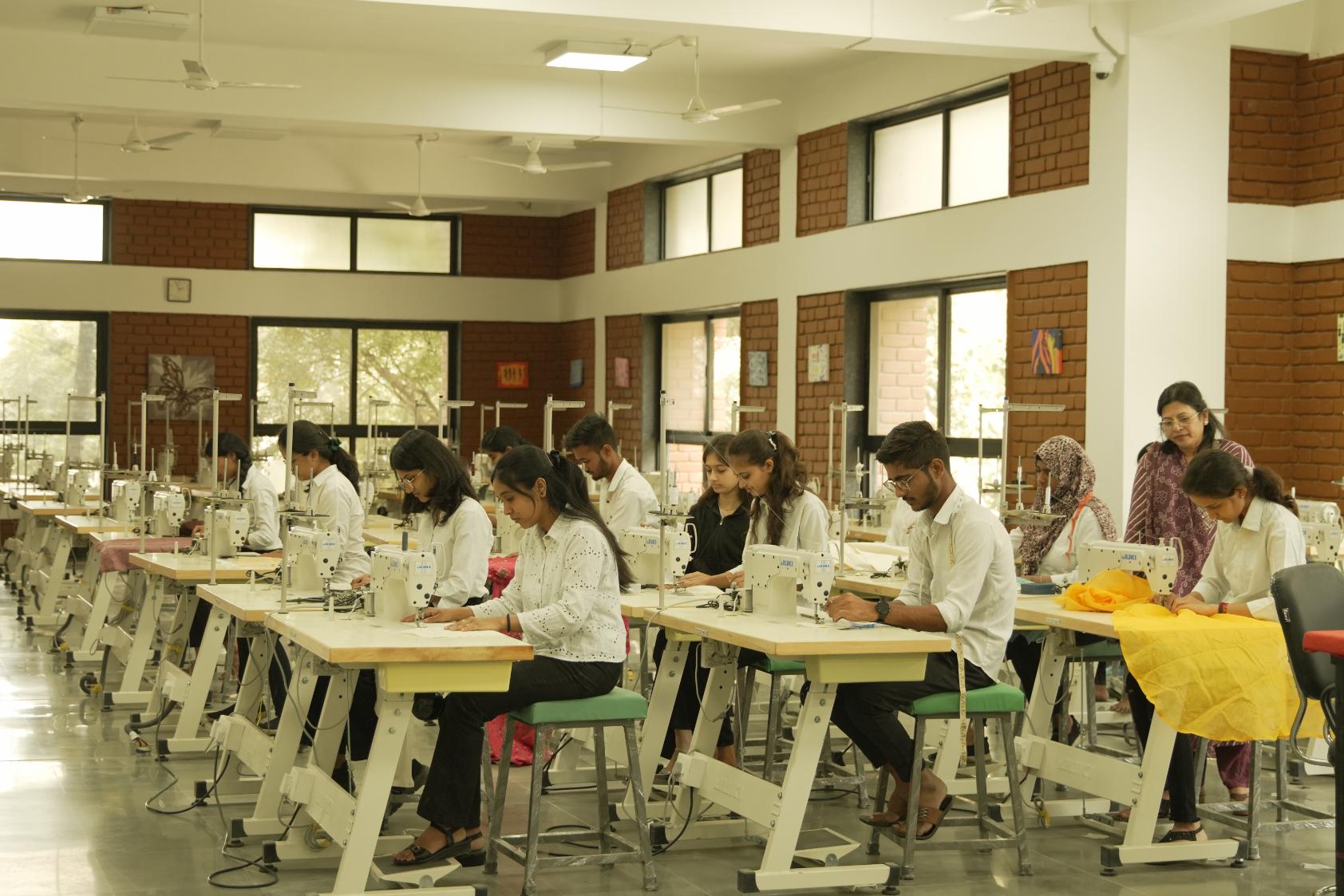


Missing Details
Year-wise Program Structure of Postgraduate Program
|
Year 1 |
Professional Core(PC) |
Skill Enhancement Course (SEC) |
Indian Knowledge System (IKS) |
Ability Enhancement Course (AEC) |
||
|
Year 2 |
Professional Core (PC) |
Professional Elective(PE) |
Research Project (RP) |
Graduation Project (GP) Design / Art Collection |
Industry Internship (OJT) |
|
| SR.NO | NAME | Organization |
|---|---|---|
| 1 | Dr. Monika Aggarwal | Chairperson, Dean Faculty of Design, MGM University, Chhatrapati Sambhaji Nagar, Email id: [email protected]. |
| 2 | Shri Sunil Patil | Professor, HOD Architecture department JNEC MGMU Chh. Sambhajinagar |
| 3 | Ms. Vijaylaxmi Sonkamble | Associate Professor Dept. Mechnical Engineering JNEC MGMU Chh. Sambhajinagar |
| 4 | Mr. Atul Kunjar | Assistant Professor, Department of Fine Arts MGM University, MGM University, Chhatrapati Sambhaji Nagar |
| 5 | Shri Ajay Dattatryarao Kulkarni | Expert in Industry,Architect Designer Chh. Sambhajinagar |
| 6 | Mr. Niteen Kumar Sinha | Designer, Creative Director & Admin head -FUME DESIGNS -Delhi |
| 7 | Ms. Anuja Dhulekar | Expert in Academics, Educator/ industrial Designer MITWPU, PUNE |
| 8 | Niteen Anant Patil | Design Faculty, Design Consultant And founder for ISTITUTO DE DISEGNO |
| 9 | Dr. Ganesh S. Jadhav | Expert in Research organization, Assistant Professor School of Design MIT WPU PUNE |
A career in jewelry design offers a unique blend of creativity, craftsmanship, and business acumen. Jewelry designers create wearable art pieces that can hold sentimental value and become cherished possessions. Here are some career opportunities in jewelry design:
Jewelry Designer: Jewelry designers create original pieces of jewelry, including rings, necklaces, bracelets, earrings, and brooches. They work with various materials, such as precious metals, gemstones, and semi-precious stones, to craft unique designs.
Custom Jewelry Designer: Custom jewelry designers work closely with clients to create one-of-a-kind pieces that cater to individual tastes and preferences. This may involve transforming heirloom jewelry, creating engagement rings, or designing special occasion jewelry.
Fashion Jewelry Designer Fashion jewelry designers focus on creating trendy and affordable jewelry pieces that complement current fashion trends. They often work with non-precious materials like costume metals, beads, and plastics.
Fine Jewelry Designer: Fine jewelry designers specialize in creating high-end jewelry made from precious materials such as gold, platinum, diamonds, and other valuable gemstones. These pieces are typically more expensive and are often considered investments.
CAD (Computer-Aided Design) Jewelry Designer: CAD jewelry designers use specialized software to create detailed digital 3D models of jewelry designs. These designs can be used for manufacturing and can streamline the production process.
Jewelry Maker/Artisan: Jewelry artisans craft jewelry pieces by hand, using traditional techniques such as metalsmithing, wire wrapping, and beading. They may sell their work independently or through galleries and craft shows.
Jewelry Technician: Jewelry technicians assist in the production process, helping with tasks such as stone setting, soldering, polishing, and quality control. They work in jewelry manufacturing workshops or studios.
Gemologist: Gemologists are experts in the identification and evaluation of gemstones. They may work in gemstone trading, jewelry appraisal, or quality control for jewelry manufacturers.
Jewelry Appraiser: Appraisers assess the value of jewelry for insurance purposes, estate planning, or resale. They use their expertise to provide accurate assessments based on factors like material quality, craftsmanship, and market value.
Jewelry Buyer: Jewelry buyers source and purchase jewelry for retail stores, galleries, or online marketplaces. They need to have a keen eye for quality and design trends.
Jewelry Store Manager: Store managers oversee the operations of jewelry stores, managing inventory, sales teams, customer service, and marketing efforts.
Jewelry Merchandiser: Merchandisers curate and arrange jewelry displays in retail settings to attract customers and maximize sales. They also work on pricing and promotional strategies.
Jewelry Entrepreneur: Many jewelry designers choose to start their own jewelry businesses, either selling their own designs or curating collections from various designers.
Jewelry Educator: With additional education and experience, you can become an instructor in jewelry design, teaching students about design principles, techniques, and the history of jewelry.
Jewelry Blogger/Content Creator: Share your passion and knowledge about jewelry through blogs, vlogs, or social media. This can help you build a personal brand and attract an audience interested in jewelry.
Networking within the jewelry industry, building a strong portfolio, and staying updated with design trends and gemology are essential for success in jewelry design and related careers. Additionally, formal education or apprenticeships in jewelry design can provide valuable skills and knowledge to kickstart your career in this field.
Missing Details
Missing Details

Mr. Atul Kunjar

Ms. Shruti Bumb

Ms. Shweta Mahajan

Amit Ashokrao Deshpande

Abraham Pathrose

Dr. Vijayalaxmi V. Sonkamble

The Computer lab caters the class of 40 students. List of Design Software accessible to the students:-
Adobe Illustrator, Photoshop, InDesign, CorelDRAW AutoCAD
(All the computers have 24X7 internet access.)

IFD Total books. 601 volume Total magazine 06 Volume 189
Total journal 03 Volume 30
COFA Total books volume 852 Total magazine 4

List of equipment’s accessible to the students: -Fibre testing equipment - Microscope
Yarn Testing Equipment - Beesly Balance Twist Tester Wrap Reel Motorized Crease Recovery tester GSM Round Cutter Fabric thickness tester Tearing strength tester
Washable platform for Chemical Testing with a sink at the corner For Mechanical Testing wooden platforms or tables with storage and a centre table for cutting of specimen and demonstration

Equipped with table looms so that students can create weave patterns.

Garment Construction lab is equipped with commercial sewing machines (Juki), drafting tables and white boards

The Pattern making studio is equipped with drafting tables, dress forms and white boards.

Exhibition Area to exhibit students, work.